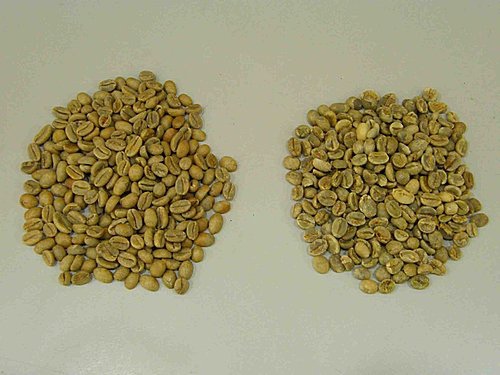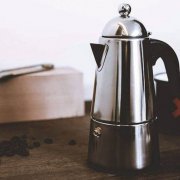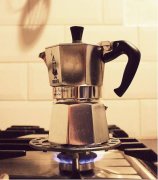What is mocha coffee? Yemeni mocha-Matali sun beans are the real mocha coffee beans in Yemen

Professional coffee knowledge exchange More coffee bean information Please pay attention to coffee workshop (Weixin Official Accounts cafe_style)
Take a sip and stir! Mocha coffee is the correct way to drink mocha coffee.
Mention Yemeni coffee and you immediately think of the rich, filling magic of sun-baked beans, the lingering, fermented tea of fantastic, wild aromas stacked in layers, as mysterious and elusive as Yemen.
Yemen is located in Asia across the Red Sea and Ethiopia in East Africa, is the highest quality natural sun method coffee producing countries, Yemen production of coffee is called mocha beans, in fact mocha is a coffee export port, including the early days of East Africa sun beans are exported from mocha port to all parts of the world, so this area includes Yemen and Ethiopia in East Africa sun beans collectively known as mocha beans.
Yemen's natural sun treatment method is to artificially harvest fully mature coffee beans and directly place the freshly harvested coffee beans in a special coffee drying field or in their own compacted soil front yard to receive sun exposure. During the sun exposure period, rice is generally turned with a wooden rake to keep each bean evenly dried. After about 20 days of coffee drying, the outer pulp and peel are removed to remove the coffee beans. Yemeni coffee is rich in flavor, complex, wild, rich, strong fermented flavor and low in acid quality, and Yemeni coffee often contains an uncertain factor (the time of season rainfall), which makes it impossible to call it the most special coffee in the world.
Yemeni coffee grows in steep terrain with little rainfall and poor ridges. The unique and unfavorable conditions for coffee growth have bred Yemen mocha, which is irreplaceable in the coffee world. The main coffee producing areas are Sanani Matari Ismaili.
This batch of coffee is from Matari region. The coffee size is inconsistent and the color difference is quite large. It looks like a small bowl bean and a bad shell bean.(Brock has pictures). The raw beans have a fermented wine fragrance. The aroma is not like Ethiopian red cherry coffee. There is an eye-catching strawberry sandwich. However, the low-key and stable fermented wine fragrance is unmatched by other countries.
Yemen mocha raw beans have many empty shell beans and raw beans of different sizes and colors, which is the characteristic of Yemen mocha and the reason why she emits uncertain aroma.
On the right is Ethiopia Mist Estate, green beans of the same size and color, no shells and no defects. On the left is Yemeni mocha matari beans of varying sizes and colors, with some empty shells.
Light Roast City (Fragrance): Coffee beans have a peanut aroma before grinding. After grinding, there is a fragrance of plum fruit wine. During brewing, there is a slight fermentation flavor. The taste is complex. There is a little grape acid in the mouth. The aftertaste is long. The sweet and round taste with the feeling of Middle Eastern milk tea can be maintained for a long time. There is malt sweet residue at the bottom of the cup. Lightly baked Yemeni mocha is still subject to constant change. It is recommended to brew 7- 14 days after baking. The fermented flavor of complex game is the best.
Heavy Roast (Normal C): Very pronounced Yemeni sun-baked beans like soft wine aroma, beans contain cocoa chocolate sweet, the whole style into a soft restrained, but at any time there will be unexpected aromas, aftertaste with aromatic mocha flavor (fermented aroma) evenly and continuously produced in the mouth.
Yemeni mocha is a good coffee full of variability. After brewing, you can smell the aroma of fermentation at high temperature. After the temperature drops, you can taste the varied and complex taste. When drinking coffee at low temperature, you can completely release the acid and sweetness. After purchase, it is recommended to drink half of the fresh Yemeni Matari flower aroma, and half of the time to show all the wildness of Yemeni Matari without regret.
The difference between hand-brewed mocha and Italian mocha mocha coffee flavor and characteristics
Important Notice :
前街咖啡 FrontStreet Coffee has moved to new addredd:
FrontStreet Coffee Address: 315,Donghua East Road,GuangZhou
Tel:020 38364473
- Prev

Six tips for making mocha better. What's the taste of good mocha?
Professional coffee knowledge exchange more coffee bean information please follow the coffee workshop (Wechat official account cafe_style) take a sip and then stir! The correct way to drink mocha coffee the right way to drink mocha is very simple to use, but the brewing process is still bitter, too strong, and lack of flavor from time to time. Today, the editor shares his own experience in using the mocha pot.
- Next

What is mocha coffee / mocha pot coffee / mocha coffee beans? The right way to drink mocha coffee
Professional coffee knowledge exchange more coffee bean information please follow the coffee workshop (Wechat official account cafe_style) take a sip and then stir! The right way to drink mocha Coffee the right way to drink mocha Coffee originated in Ethiopia, which is located in the East African Plateau, where high-end Karabica hand-dried coffee beans have been produced here for nearly 2000 years.
Related
- Detailed explanation of Jadeite planting Land in Panamanian Jadeite Manor introduction to the grading system of Jadeite competitive bidding, Red bid, Green bid and Rose Summer
- Story of Coffee planting in Brenka region of Costa Rica Stonehenge Manor anaerobic heavy honey treatment of flavor mouth
- What's on the barrel of Blue Mountain Coffee beans?
- Can American coffee also pull flowers? How to use hot American style to pull out a good-looking pattern?
- Can you make a cold extract with coffee beans? What is the right proportion for cold-extracted coffee formula?
- Indonesian PWN Gold Mandrine Coffee Origin Features Flavor How to Chong? Mandolin coffee is American.
- A brief introduction to the flavor characteristics of Brazilian yellow bourbon coffee beans
- What is the effect of different water quality on the flavor of cold-extracted coffee? What kind of water is best for brewing coffee?
- Why do you think of Rose Summer whenever you mention Panamanian coffee?
- Introduction to the characteristics of authentic blue mountain coffee bean producing areas? What is the CIB Coffee Authority in Jamaica?

